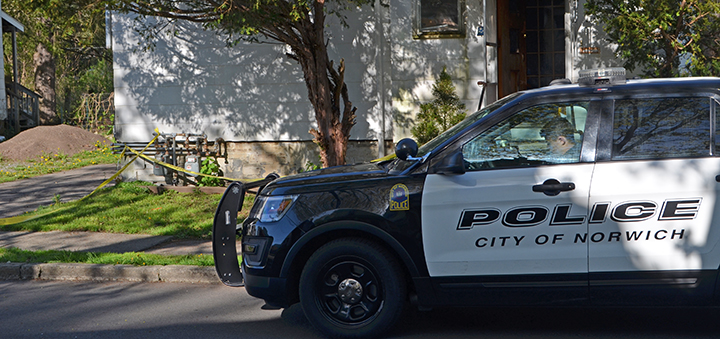TILTING AT WINDMILLS: A Tale Of Two Friendships: Houdini And Sir Arthur Conan Doyle – ENCORE
Published:
February 2nd, 2024
By:
Shelly Reuben

Imagine that I have just snapped my fingers and demanded, “Quick. Without thinking first, name the greatest magician who ever lived. Then tell me who was the world’s greatest writer of detective fiction.”
I would be willing to bet that 99 percent of you would blurt out the same two names: For magician, the legendary escape artist: Houdini. For writer, the creator of the world’s greatest fictional detective Sherlock Holmes: Sir Arthur Conan Doyle.
So. We are in agreement on that.
Both men have always fascinated me, and two books about their lives are so good that I would love to chain you to a chair and make your read them: Houdini by Kenneth Silverman (1996), and Teller of Tales: The Life of Arthur Conan Doyle by Daniel Stashower (1999). These books detail how different their public images were from the lives that they actually led. What I learned about Houdini thrilled me. What I learned about Sir Arthur Conan Doyle left me embarrassed … and a little sad.
Let’s look at Houdini first. He was billed as: World’s Handcuff King and Prison Breaker; Manacled Bridge Jumper; and Originator of the Milk Can and Suspended Straitjacket Escapes. He vanished elephants; swallowed needles; pulled rabbits out of hats, and was buried alive. His posters proclaimed that he was “The Greatest Necromancer of the age – Perhaps of all Times.” And he probably was. (For those who don’t have a dictionary at hand, “necromancer” just means wizard or magician).
Also not a secret were Houdini’s veneration for forgotten magicians – many of whom he helped financially, his authorship of books on magic, his presidency of the Society of American Magicians, his devotion to his mother, and the movies he starred in and produced. All of which are consistent with his history and his myth.
Now, let’s look at Sir Arthur Conan Doyle, justifiably enshrined in our hearts for giving us Sherlock Holmes.
When we think of that brilliant Baker Street detective, certain attributes come to mind: Reverence for reality. Meticulous research. Logic. Deduction. Evidence. Details. And facts. Facts. Facts.
In his mysteries, Conan Doyle reproaches slovenly thinking and often has Holmes snapping at Dr. Watson, his long-suffering friend: “How dangerous it is to reason from insufficient data.” “You see, but you do not observe.” “There is nothing like first-hand evidence.” “Data! Data! Data! I can’t make bricks without clay.”
The short-lived but intense friendship between the magician and the writer began when Houdini was 46 years old and Sir Arthur was 61. Houdini had heard of Conan Doyle’s interest in the Davenport Brothers, mediums that Houdini exposed as frauds in his book The Unmasking of Roubert-Houdin. He sent a copy to the writer, who not only rejected Houdini’s conclusions, but went on to attribute supernatural skills to the magician as well: “Some of our people,” Conan Doyle wrote, “think that you have yourself some psychic power.”
Initially, the friendship seemed promising. Houdini considered the creator of Sherlock Holmes “just as nice and sweet as any mortal I have ever been near.” And Conan Doyle said about Houdini that, “Nobody had ever done, and nobody in all human probability will ever do, such reckless feats of daring.” Clearly, they admired each other. Just as clearly, the friendship was doomed. Houdini was already debunking spiritualists in articles and speeches. Conan Doyle was already writing books that revealed his naïveté with titles like: The Coming of the Fairies.
His reviewers were not kind. One proclaimed, “Poor Sherlock Holmes. Hopelessly Crazy? Another asked, “Is Conan Doyle Mad?” A critic for the New York Times wrote that readers of Doyle’s detective fiction would “have reason for a peculiar grief because of the ... pathetic, thoroughness with which he has accepted as realities the ‘spiritualistic’ interpretation of the phenomena of trance speaking and writing’.”
Meanwhile, Houdini’s antipathy had turned into a crusade. In A Magician Among the Spirits, he detailed how mediums preyed upon the credulous; he spent a fortune revealing their secrets; he even brought his exposés to the stage, showing how mediums produced table rapping, spirit messages, and ectoplasm (don’t ask).
But they still liked each other! So, Sir Arthur, eager to convince Houdini that attacking the paranormal was misguided, invited him to a private séance in which Conan Doyle’s second wife, Jean, would contact Houdini’s dead mother and bring him a message from the spirit world.
The results were disastrous. The message came through, all right. Fifteen pages of “automatic writing.” But at the top of the first page was the sign of a cross – not a symbol one would expect from the wife of an Orthodox Jewish rabbi. And worse ... it was written in English, a language that Houdini’s mother could not speak.
Conan Doyle proclaimed the séance a success, insisting on “the purity of my wife’s mediumship.”
Houdini asserted firmly that he had “never heard or seen anything that could convince me that there is a possibility of communication with the loved ones who have gone beyond.”
In such a way evolved one of the most colossal ironies of all times: That the magician became the passionate advocate of reason. And the creator of the world’s most logical detective became one of the fiercest and least rational defenders of spiritualism, séances, and fairies.
Each time I read Sherlock Holmes stories, I shake my head in disbelief, unable to reconcile the meticulous teller of those tales with the man who would later be seduced by the occult. I am not alone in this. A contemporary of Sir Arthur who knew and liked him probably expressed it best. I can imagine him sighing with sad compassion as he said, “Poor, dear, loveable, credulous Doyle! He was giant in stature with the heart of a child.”
Copyright © Shelly Reuben, 2024. Shelly Reuben’s books have been nominated for Edgar, Prometheus, and Falcon awards. For more about her writing, visit www.shellyreuben.com
Author: Shelly Reuben - More From This Author
Comments






